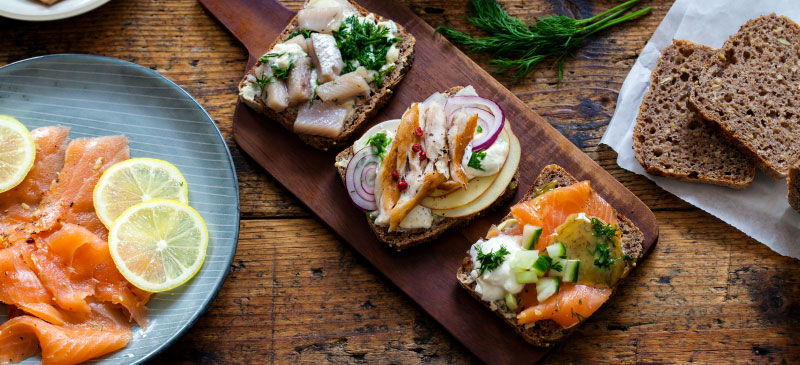This Dr. Axe content is medically reviewed or fact checked to ensure factually accurate information.
With strict editorial sourcing guidelines, we only link to academic research institutions, reputable media sites and, when research is available, medically peer-reviewed studies. Note that the numbers in parentheses (1, 2, etc.) are clickable links to these studies.
The information in our articles is NOT intended to replace a one-on-one relationship with a qualified health care professional and is not intended as medical advice.
This article is based on scientific evidence, written by experts and fact checked by our trained editorial staff. Note that the numbers in parentheses (1, 2, etc.) are clickable links to medically peer-reviewed studies.
Our team includes licensed nutritionists and dietitians, certified health education specialists, as well as certified strength and conditioning specialists, personal trainers and corrective exercise specialists. Our team aims to be not only thorough with its research, but also objective and unbiased.
The information in our articles is NOT intended to replace a one-on-one relationship with a qualified health care professional and is not intended as medical advice.
What Is the Nordic Diet? Benefits, Meal Plan & What You Can Eat
June 17, 2022

It’s not often that the government of a country joins forces with a well-known restauranteur to develop and promote an eating plan that’s intended to improve public health. That’s exactly what happened in Denmark recently with the “Nordic diet.”
U.S News ranked the Nordic diet as the No. 10 best overall diet for 2022. So what is the Nordic diet, and how does it differ in terms of health benefits from the praised Mediterranean diet?
The Nordic diet meal plan is a fresh perspective on healthy Nordic and Scandinavian cuisines, which include nutrient-rich foods like fish, vegetables and whole grain breads. It has many things in common with the Mediterranean diet, but the food choices differ if you choose to follow a traditional Danish diet — such as one that includes ingredients like elk meat, herring fish, Icelandic yogurt, lingonberries, rutabaga and whole grain crisp breads.
Not only can following this diet improve your nutrient intake, but it might even have benefits for mental health, since it emphasizes eating mindfully among family and friends.
What Is the Nordic Diet?
The Nordic diet is a health-promoting plan based on local, fresh foods in season, with an emphasis on sustainability.
The diet was created by researchers at Denmark’s University of Copenhagen, along with the co-founder of the popular Danish restaurant called NOMA, which has earned the title of the “best restaurant in the world” by certain critics. It’s also sometimes referred to as the new Nordic diet (NND).
The Nordic diet’s main principles are described below:
- Emphasize fresh fruits and vegetables. Eat a variety every day, ideally those that are grown locally and are in-season.
- Choose whole grains over refined grains.
- Eat fish and seafood regularly. Choose fish over meat in most cases.
- When meat is eaten, which should be in small amounts, opt for grass-fed meats. Also eat plenty of plant proteins.
- Buy organic foods as much as possible, especially fresh plant foods.
- Avoid processed foods made with added sugar and other additives.
- Cook more often at home, and enjoy meals in relaxed settings with other people.
- Try to help protect the environment by eating a “climatarian diet,” including by buying less foods in packages and less factory-farm-raised meat.
Potential Benefits
1. High in Disease-Fighting Antioxidants, Vitamins and Minerals
Studies suggest that people eating the new Nordic diet consume greater amounts of essential nutrients, especially from increased intake of plant foods, compared to those eating standard a Danish diet (which is similar to a standard American diet).
By eating more nutrient-rich and anti-inflammatory foods, including those high in fiber and polyphenol antioxidants, people following the NND benefit from greater protection against health issues like high blood pressure and obesity.
In one six-week intervention study, the NND helped improve blood lipids and insulin sensitivity compared to a control group. Another study found that NND adherence lowered total mortality risk.
Researchers now describe the NND as “a healthy and attractive alternative to the regional Mediterranean diet or DASH diet.”
2. Can Be Low Glycemic, Which Supports Metabolic Health
Creators of the Nordic diet recommend aiming for a generally low glycemic diet, meaning one that’s high in protein, fiber and healthy fats but low in sugar and processed grains.
This way of eating — such as focusing on protein-rich foods and veggies with every meal — can help make you feel satisfied for longer, so you eat less calories overall and experience less cravings for junk foods.
To do this, make about half your plate fresh produce, about a quarter of your plate a source of protein, and the remainder some type of whole grains or healthy fats, such as nuts and seeds. If you really want to keep the glycemic score of your diet down, consume twice as much protein grams per meal than grams of carbs (for example, 30 grams of protein and 15 grams net carbs).
Sticking to a moderately low glycemic index diet can help support healthy blood glucose (sugar) levels and improve insulin sensitivity, which are critical for metabolic health and preventing weight gain. A whole foods diet also helps reduce inflammation and lowers your risk for many chronic diseases, such as type 2 diabetes, heart disease, obesity and others.
One study published in 2018 in the British Journal of Nutrition found that adults following the Nordic diet were able to maintain a healthy weight and/or lose weight over a seven-year period.
3. Fish/Seafood Supplies Omega-3s and Protein
As opposed to eating lots of meat and dairy products, this diet includes more fish as a healthy protein source, including herring, salmon, mackerel and sardines. These foods provide healthy omega-3 fatty acids that can help manage inflammation and support cardiovascular health.
Sustainable types of fish are also better for the environment compared to beef and certain other types of meats.
4. Good for the Environment
The Nordic diet encourages people to shop for ingredients that are grown locally and seasonally, such as at local farmers markets, fisheries, and small grocery stores or health food stores that sell organic produce. Dining out at farm-to-table restaurants is another way to support your local economy and eat more nutritious meals.
Aside from buying fresh, local foods that require less resources to package and ship, the Nordic diet supports the planet by encouraging more sustainable food choices, such as proteins like sardines and legumes as opposed to factory-farm beef (which produces the most destructive greenhouse gas emissions of any food).
As an article written by Harvard Health Publishing explains, “plant-based diets use fewer natural resources (such as water and fossil fuels) and create less pollution than meat-heavy diets. In addition, eating locally-produced foods also reduces energy consumption and food waste.”
5. Emphasizes the Social Aspect of Meals
Experts on the Nordic diet recommend setting aside about one hour every day to cook homemade meals. This might not seem practical for most busy families, but if you can find the time to cook more, it can have big payoffs.
Preparing and sitting down to homemade meals, especially if eating with others, is associated with higher nutrient intake, lower calorie intake (which can lead to easier weight management) and potentially even improved mental health, since sharing meals is a bonding experience.
Aim to eat while undistracted so you can pay attention and get the most enjoyment from the meal. Also focus on eating until you’re no longer hungry but not to the point of being overly full.
How to Follow: Food List to Eat and Avoid
You don’t necessarily have to seek out specific Nordic or Danish foods to follow this diet. Instead, the big idea is to “return to nature” and eat whole foods that are locally grown, fresh, seasonal and unprocessed.
Nordic Diet Food List (What to Eat)
- All types of vegetables (organic, in-season and locally grown if possible): root veggies like turnips, onions, radishes, carrots, cabbage, wild mushrooms, tomatoes, leafy greens, broccoli, cucumbers, etc.
- Herbs and spices, such as garlic, turmeric and ginger
- All types of fruits (organic, in-season and locally grown if possible): lingonberries, strawberries, blueberries, pears, rutabaga, etc.
- Fish/seafood, including herring/white fish, salmon, sardines and mackerel
- Whole grains, such as dark whole grain breads made with rye or traditional pumpernickel or sourdough bread that is fermented; steel cut oats are also a popular ingredient
- Grass-fed meats, such as small amounts of elk, beef, veal or pork
- Healthy fats, like olive oil, rapeseed oil, nuts and seeds, such as chia and flax
- Unsweetened, organic dairy products, including Icelandic yogurt
- Free-range eggs
- Beans and legumes, such as lentils, chickpeas and tofu
What Can You Not Eat on the Nordic Diet?
- Sugary beverages
- Snacks made with added sugar
- Refined white breads and other processed carbs, such as pasta
- Low-quality meat, such as processed meats, cured meats and cold cuts
- Most packaged and processed goods, including desserts and low-quality dairy products
Recipes/Sample Meal Plan
As mentioned above, a typical NND plate includes plenty of fresh veggies and/or fruit, plus a source of protein and some healthy fats. Whole grains can also be included, but stay away from sugary, processed grains.
Here’s an example of a Nordic diet meal plan:
Breakfasts:
- 2 eggs with cooked greens and stewed tomatoes, served with side of fruit or sourdough bread
- Unsweetened yogurt with berries and chia seeds, plus optional steel cut oats on the side
Lunches:
- Salmon served over large salad, with cut up veggies and olive oil dressing
- Bean and vegetable soup with whole grain bread
Dinners:
- Small portion of pork tenderloin or beef with side salad, steamed veggies and whole grains
- Fish, such as herring, serve with roasted root veggies and pumpernickel bread
Snacks:
- Low-GI toast or crisp bread with fresh fruit or nuts
- Yogurt with fruit
Recipes to Try:
- 20 Baked Fish Recipes
- Stuffed Mushroom Recipe
- Apple Cinnamon Baked Oats Recipe
- Salmon Patties Recipe
- Baked Vegetable Fries Recipe
Risks and Side Effects
Generally speaking, this NND diet is very safe for people of all ages to follow. If you have a history of chronic disease and take medications, it’s best to get your doctor’s opinion before altering your diet or starting a new protocol.
That being said, there are little risks associated with this plan, assuming you aim for balanced meals that include a variety of food groups.
Conclusion
- The new Nordic diet is a healthy eating plan that emphasizes local, nutrient-rich foods that are also sustainable.
- A Nordic diet menu includes foods like local and seasonal vegetables, whole grains, fish, nuts, seeds, legumes, and small amounts of dairy and grass-fed meats.
- Benefits of this plan include protection against weight gain, diabetes, high blood pressure, heart disease and more. It’s also good for the environment, as it encourages more plant proteins ands stainable fish, and it can support the local economy, too.













